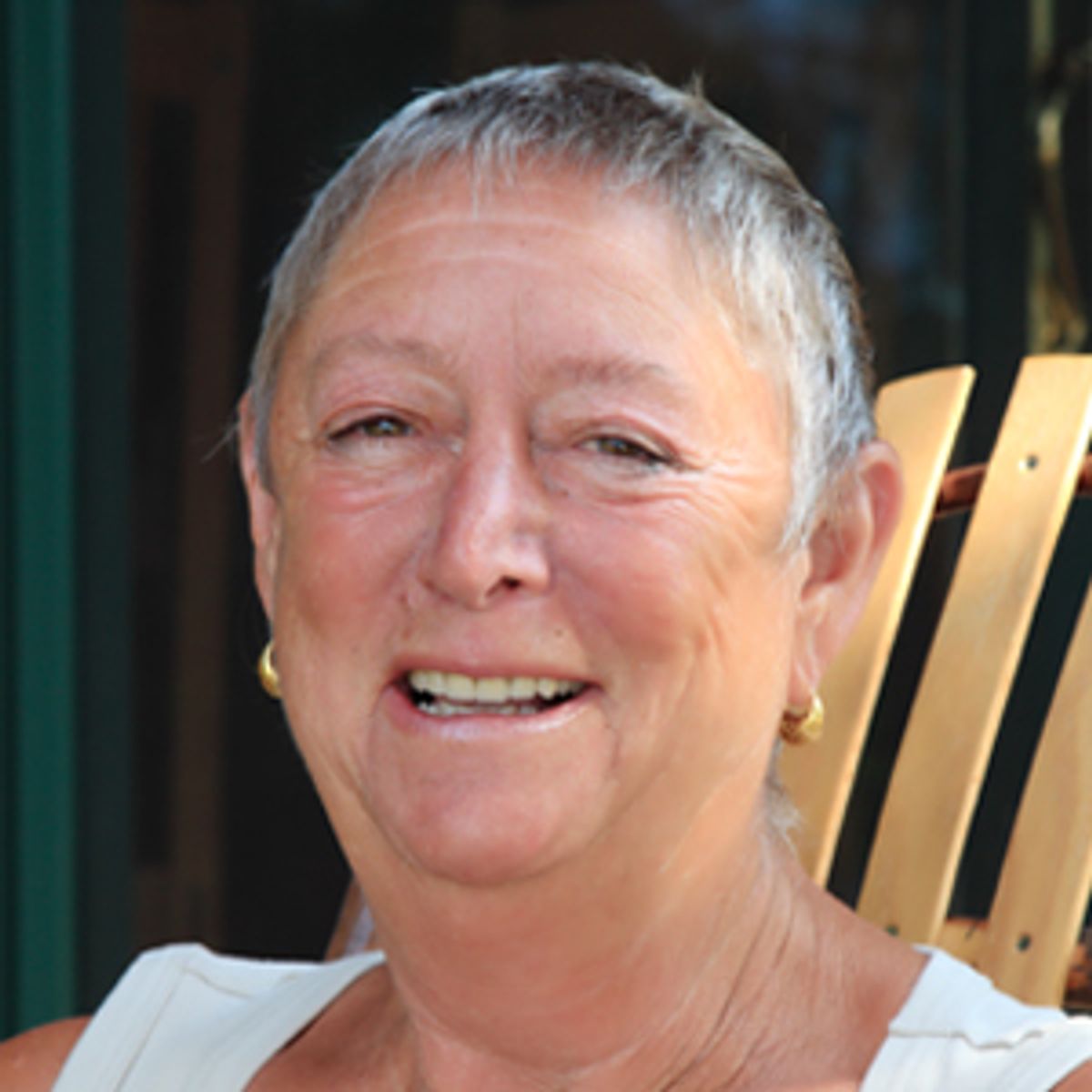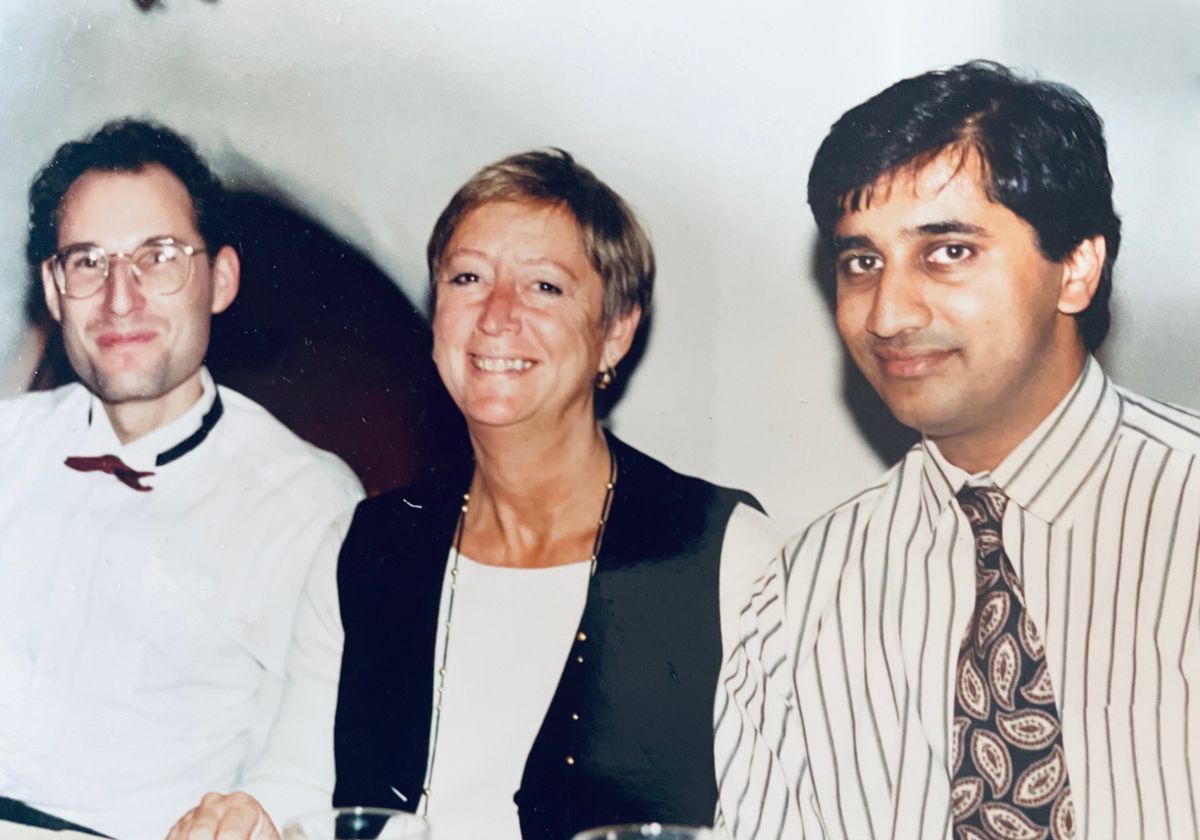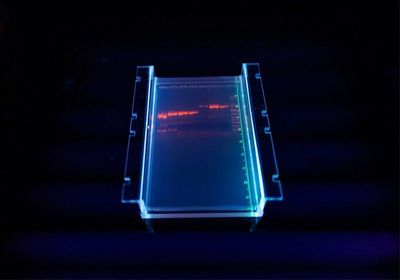Christine Guthrie, a molecular geneticist whose studies of eukaryotic RNA yielded crucial insights into the workings of pre-mRNA splicing, the process by which introns are removed to produce mature messenger RNA, died July 1 at age 77.
“Her devotion to the RNA field was unwavering. In many ways, she was the soul of the field,” Hitan Madhani, a University of California, San Francisco, (UCSF) molecular biologist who was previously a graduate student in Guthrie’s lab, writes in an obituary published by the university. “With a conviction in the unmatched power of yeast genetics and its nexus with biochemistry, she embraced biological complexity rather than being unnerved by it. UCSF and the RNA field owes Christine a debt of gratitude.”

Born in April 1945, Guthrie was raised by a single mother, the writer Irene Kampen. As a young adult, Guthrie inspired many characters in her mother’s comedic novels, according to an obituary published in Science, including characters in Kampen’s 1961 novel Life Without George, which itself inspired the long-lived 1960s television series “The Lucy Show.”
When she first arrived at the University of Michigan as an undergraduate student in 1962, Guthrie initially toyed with the idea of becoming a writer herself. But in a 2010 reflection published in the Journal of Biological Chemistry, Guthrie recalled bristling at the seemingly arbitrary evaluations, writing that, “When my essay on Moby Dick came back covered with red ink and a large angry ‘C,’ I decided I had had it. I would pursue science, unassailable in its objectivity! (Or so I thought.)”
Guthrie switched to zoology, and during her senior year, attended a lecture that sparked an interest in biochemistry. She learned that University of Wisconsin-Madison biochemist Masayasu Nomura had recently succeeded, for the first time, in splitting a bacterial ribosome into several pieces and putting it back together again, a feat that Guthrie called “a biochemical tour de force.”
After graduating in 1966, Guthrie married her high school sweetheart and followed him to Wisconsin while he attended medical school. There, she had the chance to meet Nomura in person. After telling him she wanted to work on ribosomes, she writes in her reflection, his response was that “girls can’t do biochemistry.” Even still, he agreed to put her to work, accepting her as a graduate student in his lab. She noted in the acceptance speech for her 2006 RNA Society Lifetime Achievement Award that the lab environment was always quite hostile and even caused her to leave academia for a time.
Her dissertation work involved studying the effect of temperature on ribosome assembly. While the team had mostly carried out their research in cold rooms, a postdoc in the lab fortuitously discovered that some ribosomes could only be reconstituted when heated to 40 ºC. Christine reasoned that perhaps ribosome assembly was also susceptible to cold, Science reports. She generated mutant E. coli that stopped growing at low temperatures, finding that many mutants accumulated partial ribosomes that matched the intermediates observed in prior experiments, thereby validating the pathway’s biological relevance.
Guthrie received her PhD in 1970 and began a postdoc at the Max Planck Institute in Germany. Her experience there, she noted in her 2006 speech, left her with crippling self-doubt. “Everyone else I saw was smarter and brimming with confidence. And while some folks may succeed only by those virtues, my greatest strength has always been my curiosity.” But she soon met Bill McClain, then an assistant professor at the University of Wisconsin. He was impressed by her work and encouraged her to shop around for a faculty position.
After touring several schools, Guthrie was hired in 1973 as the first woman (and seventh faculty member overall) in the department of biochemistry and biophysics at UCSF, where she remained until her retirement in 2014. Here, she said in the acceptance speech, she found a community that embraced her on the merits of her work. “I was amazed to find such a positive scientific environment and, for the first time, I could actually imagine establishing a lab of my own—one which would be supportive and nurturing, fostering good science by promoting well-being.”
Over the following decades, Guthrie became an expert in the burgeoning field of pre-mRNA splicing, the process by which eukaryotic cells remove introns from the initial strands of RNA produced by a gene’s DNA template to produce mature messenger RNA. This ability had only been discovered in mammals a few years before, in 1977, and it was unclear whether model systems such as the yeast Saccharomyces cerevisiae could be used to study this process in more complex organisms. But Guthrie spent decades using yeast to study pre-mRNA splicing, cloning and sequencing the genes for yeast small nuclear RNAs (snRNAs) that are essential for mammalian splicing and establishing the mechanisms controlling base pairing between the snRNAs and their target sequences at each step of intron removal. While some yeast snRNAs differed significantly from their mammalian counterparts, disrupting their genes produced splicing defects and thus demonstrated a conservation of function across groups.
See “Alternative Splicing Provides a Broad Menu of Proteins for Cells”
In later years, Guthrie also focused on spliceosomes, the group of proteins responsible for removing introns from pre-mRNA, and how they facilitate splicing by bringing snRNAs and mRNA together in an orderly fashion. For her contributions, Guthrie was elected to the National Academy of Sciences in 1993 and received many awards, including the Genetics Society Medal in 1997, the Women in Cell Biology Senior Career Recognition Award in 1998, the RNA Society Lifetime Achievement Award in 2006, and the American Society for Biochemistry and Molecular Biology-Merck Award in 2011, UCSF notes in its obituary.
Guthrie, a prolific academic mentor, created what the RNA Society calls “a generation of RNA biologists,” many of whom remember her best for bringing students together as part of a massive academic family. In an obituary published by the society, former student David Tollervey, now an RNA biologist at the University of Edinburgh, says that Guthrie was “an engaging, indeed inspirational, research group leader,” while a trio of former students who coauthored the Science obituary noted that Guthrie, perhaps because of her own experiences, always prioritized the emotional wellbeing of her mentees. “Many of us were reassured by Christine’s acknowledgment of uncertainty and emotional fragility, and she modeled self-care through her attendance at a support group of female scientists that has met for almost 50 years.”
Guthrie is survived by her husband, fellow UCSF professor emeritus John Abelson.






